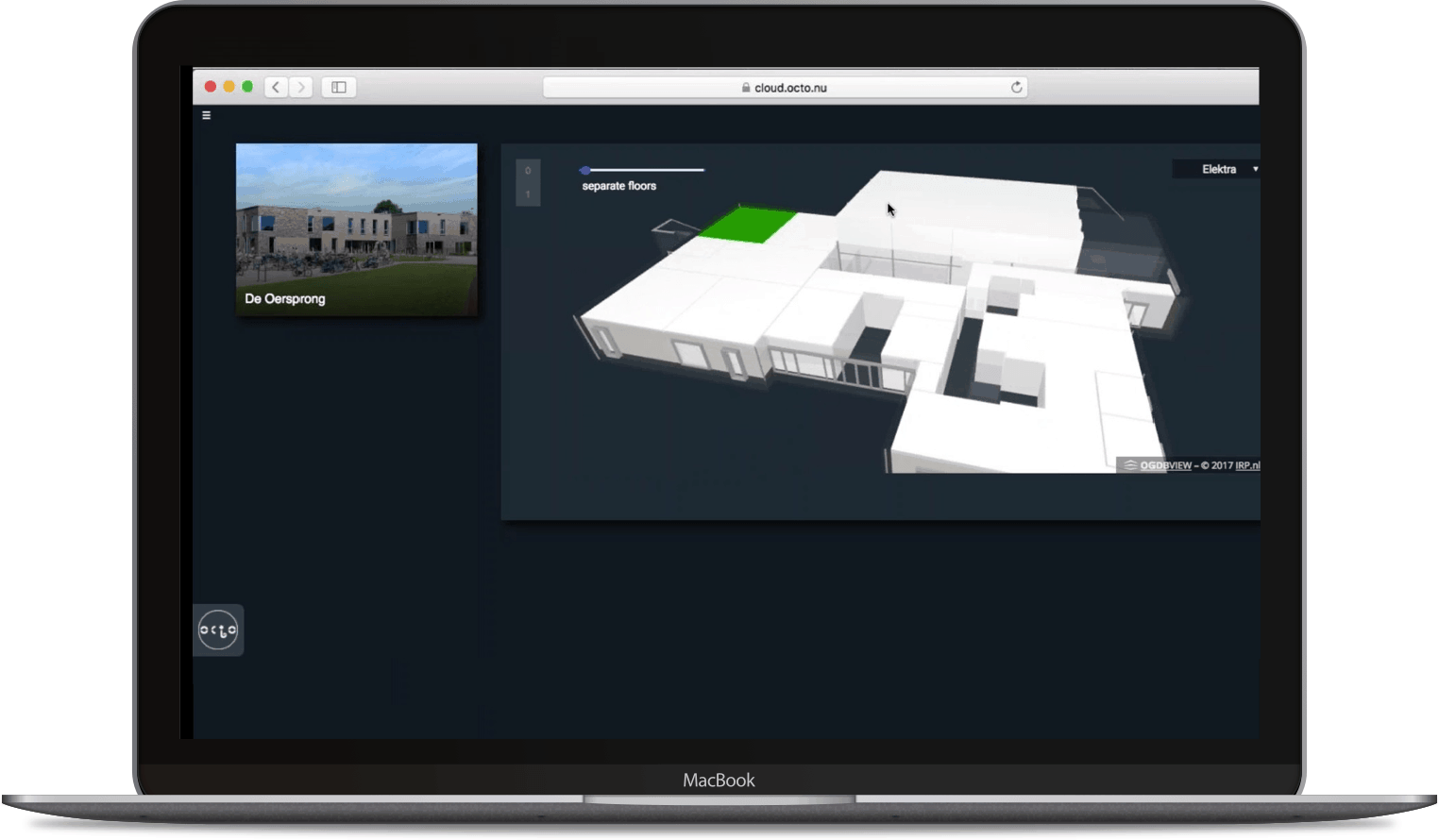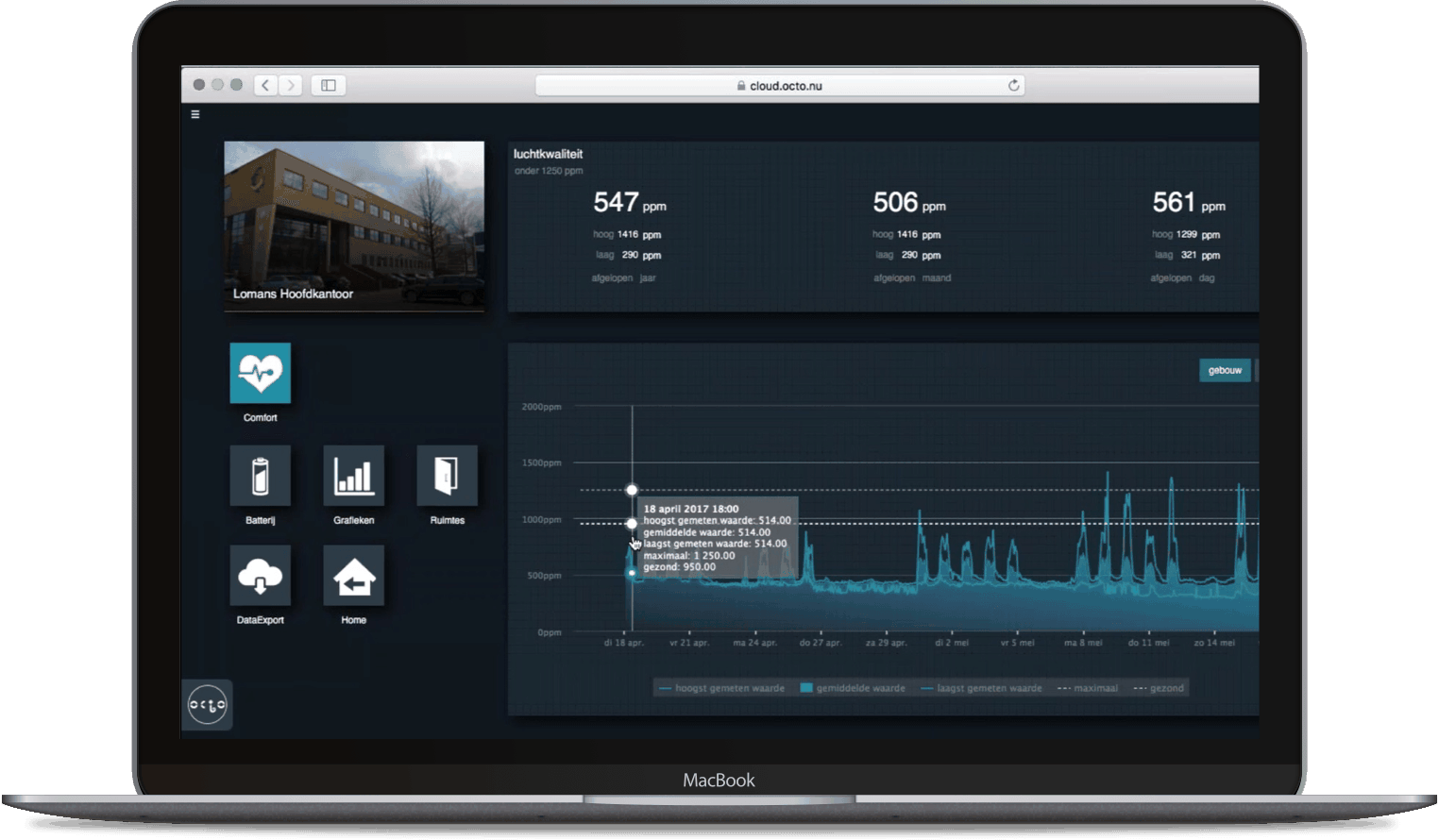How Octo Gains Insight into Buildings’ Performance with IoT
Disruptive technologies are reshaping the world in which we live and work. Many organizations know the potential of these technologies, but simply do not have the time and resources to adapt these disruptive technologies.
As a result, these organizations focus on maintaining their current operations rather than innovating their business.
What these organizations do not realize is that it does not require many resources to adapt these disruptive technologies with a rapid development platform. These platforms allow organizations to easily build apps and embrace disruptive technologies.
Read the following blog to learn how Octo innovated their business through embracing Internet of Things in their app.
Analyzing Building Performance with IoT & Sensor Data
Octo optimizes buildings with data derived from the Internet of Things applications. They provide real-time data on the performance of buildings.
In most buildings, a lot of data is already collected, like the thermostat measures the temperature, the motion detector detects people in the building, and the ventilation system measures the CO2 levels. However, this data is used on its own and is not connected to each other, so nobody has a clear overview on the overall performance of the building.
As most of the data is already available in many buildings, Octo collects and combines this data from different sources with a minimal number of new sensors.
The customer is provided with actionable insights to optimize the buildings, like:
- Creating a healthy indoor climate with the least amount of energy
- Making cleaning rounds more efficient by designing it on occupancy patterns

Octo developed an application that enables smarter operations through connected products. They connect existing building management systems and security systems with the same database, and add multiple IoT endpoints, such as sensors, to fill in the gaps.
These IoT endpoints connect through KPN LoRa to IoT Software on Microsoft Azure, where all data is stored. Octo’s IoT app is built on Mendix, which retrieves the data from Microsoft Azure and provides users with a series of dashboards.
Cost Efficiency & Improved Building Performance
Octo uses these dashboards to create transparency in the performance of the building for the different stakeholders and provides actions for improvement.
Facility management can check the occupancy of all the rooms and adjust the cleaning rounds accordingly. Based on the occupancy and outside temperatures, Octo’s IoT app provides:
- Insights into possible energy savings
- Reports for government agencies to ensure the buildings’ performance adhere to rules and regulations

Besides building performance, Octo’s IoT app also makes buildings more cost-efficient through predictive maintenance. For this purpose, they have developed specific sensors.
Currently, wood maintenance is done every 6 years to prevent wood rot, regardless of the status of the wood. With Octo’s sensor, the humidity of the wood is constantly measured, so wood maintenance is only performed when it is necessary. This reduced the maintenance time from once every 6 years to once every 8 years.
Rapid Adjustment for Customer Feedback
Octo started with a Minimum Viable Product in Mendix, which only collected the temperature, CO2 levels, energy consumption, and occupancy of the building, where they could apply predictive analytics. By listening to their customers, they came up with ideas for new features and constantly expanded their product with these suggestions.
In Mendix, they can easily create and add different roles for these stakeholders. In just three weeks they can create a Proof of Concept for a new stakeholder and in 9 weeks they can implement it already into the app.
This illustrates the flexibility and speed of a low-coding platform. Octo’s IoT app has already won several innovative prices, such as the Green Brick of JJL Real Estate and Innovative Leaders of the European Union.